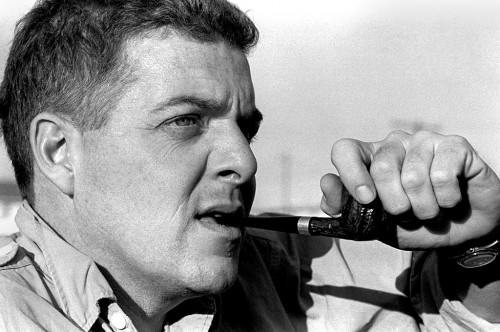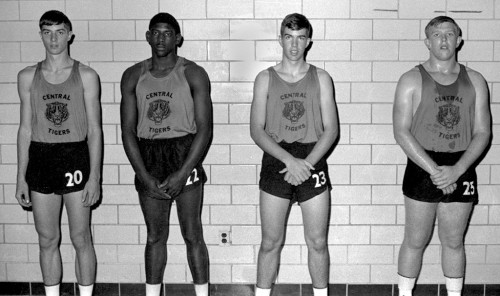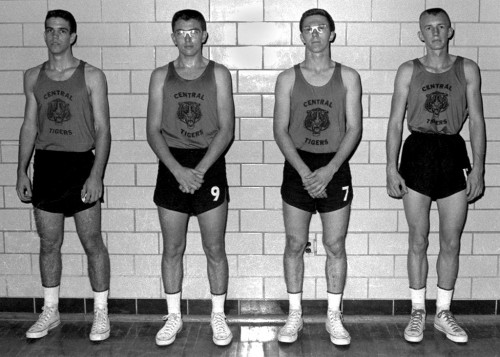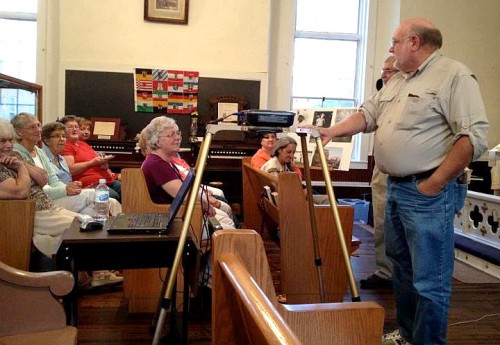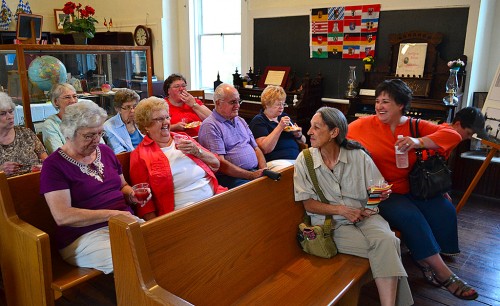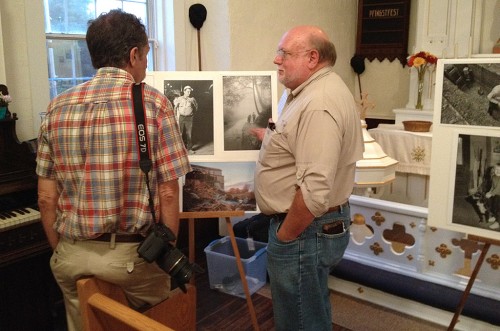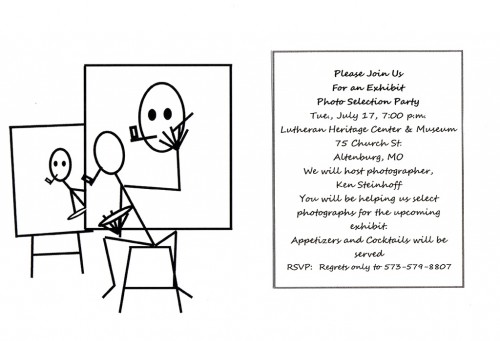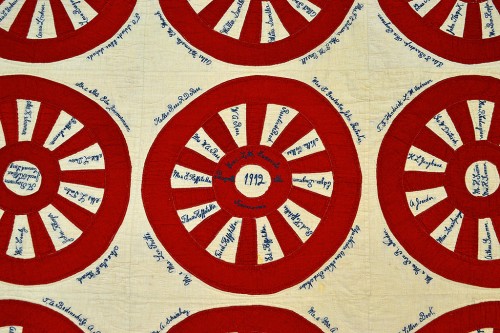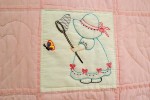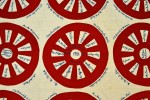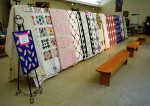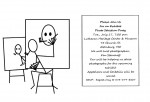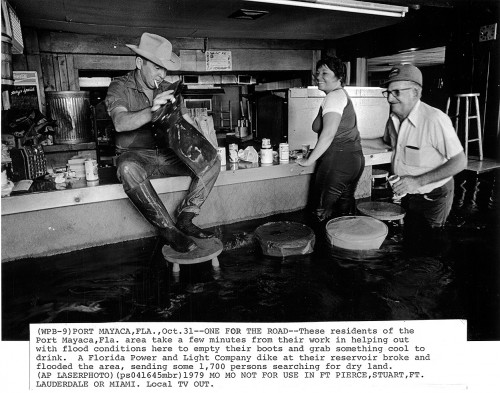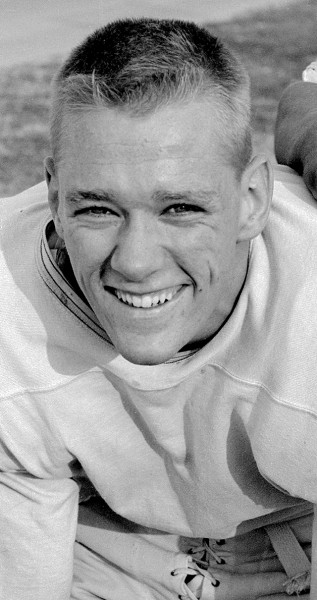 The first time I went out to shoot a high school team’s mug shots for The Missourian, I took individual photos of each player. That was a chunk of change at five bucks a head. Unfortunately, jBlue balked at paying that much.
The first time I went out to shoot a high school team’s mug shots for The Missourian, I took individual photos of each player. That was a chunk of change at five bucks a head. Unfortunately, jBlue balked at paying that much.
“Shoot the whole team in one photo. We’ll crop the individual mugs from it,” he ordered. (Click on any photo to make it larger.)
Chuck Murdoch brokered a compromise
That might have made good sense from The Missourian’s standpoint, but it meant that I had to spend an hour or more driving to the school, setting up the pictures, collecting IDs, plus another hour in the darkroom for the five bucks. The other problem was that each head was significantly smaller than a dime, which was considered the minimum size any face could be to show up clearly in the paper.
Break ’em up into fours and fives
Sports editor Chuck Murdoch, worked out a compromise: I’d break the team into groups of four or five and get paid $3 a shot for mugs. That would give Chuck faces big enough to reproduce and would make me enough money to be worthwhile. (I didn’t know in those days I could tell somebody to take a hike if I didn’t like the price.)
I got better at it
I got better and faster with experience. First off, I learned how to control the situation: I wouldn’t let a coach dictate how I was going to shoot and I wouldn’t take any guff from the players. I’D pick the location to give me the best light to work with. Then, I’d enlist the coach or someone else to help the guys write their names on a sheet of paper and line up. I’d pitch a coin on the ground or floor and say, “Kneel on the coin. I’m going to take two shots. In the first shot, hold the sheet of paper under your chin like a jailhouse booking photo. Then, drop the sheet and give me an expression that’ll make your momma proud.”
It wasn’t art
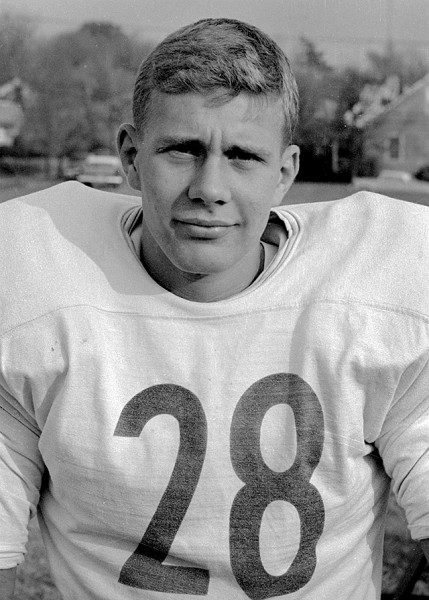
Once I realized that nobody was looking for meaningful portraits that captured the soul of the player, I could knock off a team in about 30 minutes. All the sports department wanted was a reasonably sharp photo that showed two eyes, a nose, a mouth and two ears (if the player had all those parts) that they could run 1 column by 3 inches to break up the type. (These aren’t examples of when I had my act together, by the way. I was still learning.)

